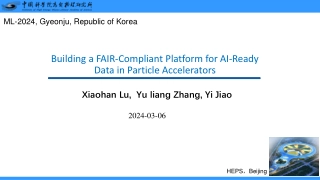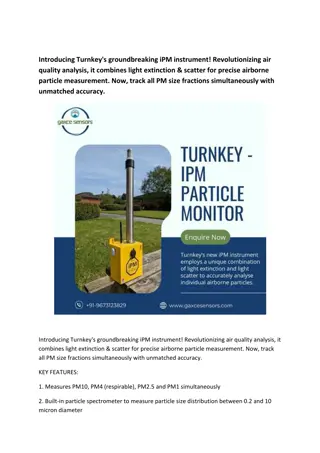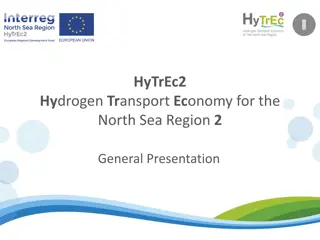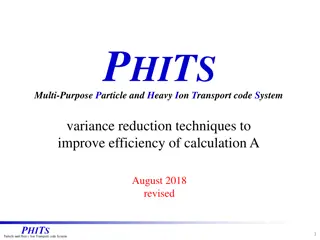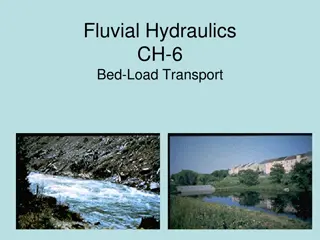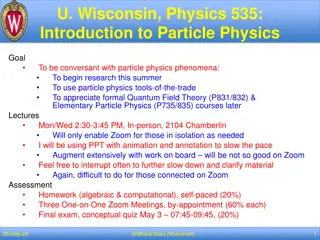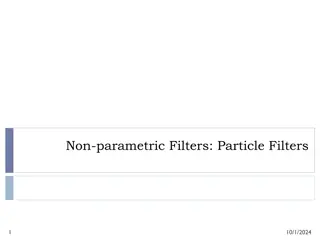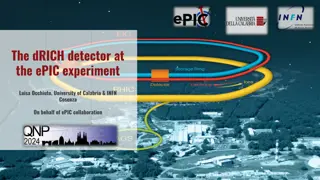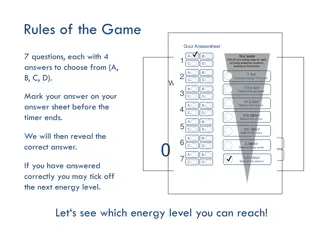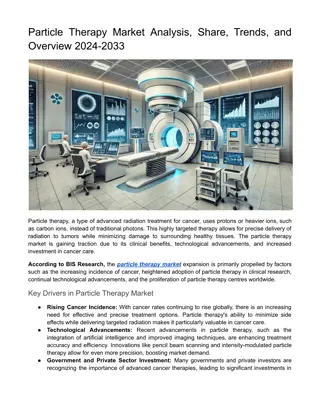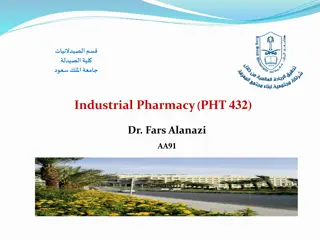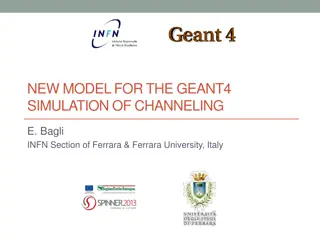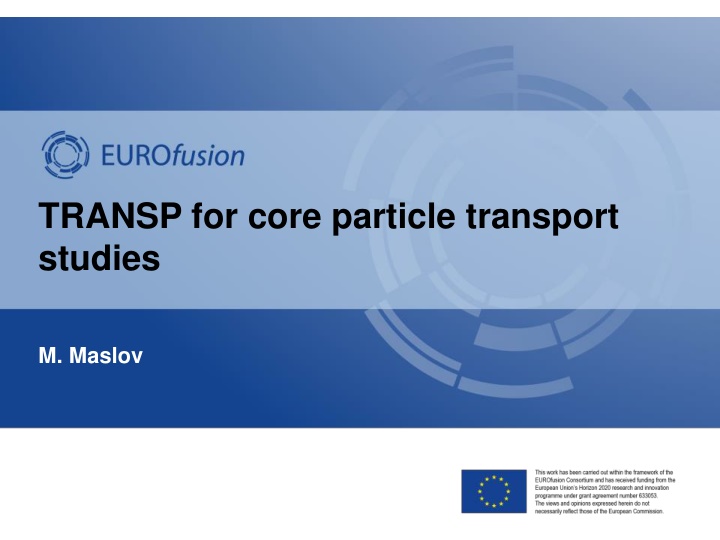
Studies on Core Particle Transport: Evolution and Implications
Explore the evolution of core particle transport during L-H transitions in fusion plasmas, impacting key parameters like radiated power and particle loss. Understand the importance of the evolution of core Te and ne, which can determine the plasma's fate between burning sustainably or reverting to L-mode. Delve into insights from experimental observations and theoretical models, shedding light on the behavior of hollow density profiles and the significance of slow evolution in achieving target plasma conditions.
Download Presentation

Please find below an Image/Link to download the presentation.
The content on the website is provided AS IS for your information and personal use only. It may not be sold, licensed, or shared on other websites without obtaining consent from the author. If you encounter any issues during the download, it is possible that the publisher has removed the file from their server.
You are allowed to download the files provided on this website for personal or commercial use, subject to the condition that they are used lawfully. All files are the property of their respective owners.
The content on the website is provided AS IS for your information and personal use only. It may not be sold, licensed, or shared on other websites without obtaining consent from the author.
E N D
Presentation Transcript
TRANSP for core particle transport studies M. Maslov
ITER L-H transition at full field DT plasma is not robust! ????> ~ ??? At L-H transition density increases, PLH increases, Prad increases and therefore Ploss goes down -> going back to L mode, unless PDT increase after L->H will compensate change in Prad and PLH Evolution of core Te and ne at L-H transition is important, since it determines evolution of Prad and PDT and can make difference between reaching Q=10 burning plasma or falling back to L-mode Evolution of ne particle transport, still not very well modelled! (even in the core) Name of presenter | Conference | Venue | Date | Page 2
Few years ago it was noticed that on JET at L-H transition a hollow density profile is formed transiently as edge density is rising much quicker than the core. Ref: A Loarte et al Plasma density and temperature evolution following the H-mode transition at JET and implications for ITER , NF 2013 Name of presenter | Conference | Venue | Date | Page 3
Slow evolution of hollow density profile observed on JET in high current baseline scenarios. After several ??-s typically terminated by a sawtooth Provisionally in agreement with GK simulations Paper on pinboard: B.Baiocchi et al Paper on pinboard: B.Baiocchi et al Evolution is dominated by NBI core particle fuelling, i.e. if we use sourceless heating (like ICRH) and plasma w/o sawteeth evolution could take MUCH longer (whole pulse duration?) Slow evolution is benefitial in ITER scenario (Pbrems would increase slower than PDT, plus tungsten accumulation reduced until PDT ramped to full) BUT evolution must not be too slow! PDT=max at high core density so that point must be eventually reached to achieve target Q=10 Name of presenter | Conference | Venue | Date | Page 4
Why TRANSP? Experiment proposed on JET to study particle transport at transition from hollow to normal density profile and validate first principle models (ITPA high priority) TRANSP is needed to interpret experimental data -> calculate turbulent particle fluxes (distinguish from NBI deposited) and heat diffusivity at these conditions. Processes are transient so time evolution is important. For different cases empirical dependencies on plasma parameters will be derived and then compared with gyrokinetic models PLAN - - - - - Experiments to be approved, call for participation (February-March?) Practice run #79676 (best example in C-wall we have) Analysis of experiments parasitically various pellet fuelled discharges Dedicated experiments if time is given (pellet at L-H transition to magnify the hollowness) If I ll not manage to do TRANSP analysis myself help from the experts (YOU!) will be needed. Name of presenter | Conference | Venue | Date | Page 5

